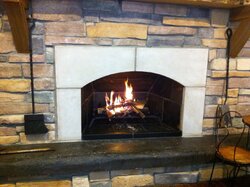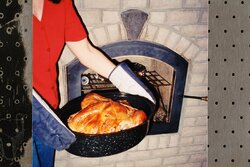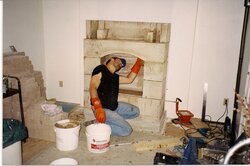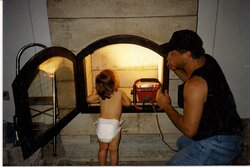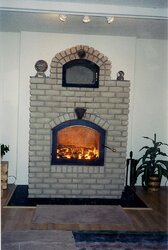Has anybody ever had a Finnish Fireplace? This is the best wood stove in the world. It is a massive masonry wood stove, invented in Finland following WW2.
The Finns did a great deal of research at their Technical Institute and learned that the hottest wood fire is gained from a high firebox, I don't recall the exact specs but the firebox in the Finnish Fireplace is about 4 feet high. A firebox this high generates the hottest heat.
With a 5 to 7 ton fireplace, set entirely within the house, like a cast iron wood stove would be, the massive amount of masonry absorbs the heat of the fire, and then radiates out the heat all day.
Even on a cold day, say a low of about 10 degrees, the Finnish Fireplace is burned only for about a half an hour in the morning, and then again for a half hour at night.
On a really cold night in Finland, the Finnish Fireplace is burned 3 times a day. The 1700 degree fire turns an armload of firewood into a small amount of ash.
I am in the North Carolina Mountains and I wanted to install a Tulikivi Finnish Fireplace in my log cabin. Alas, I learned that it is not cold enough here to efficiently use a Finnish Fireplace.
Here is a pic of a Tulikivi Finnish Fireplace:
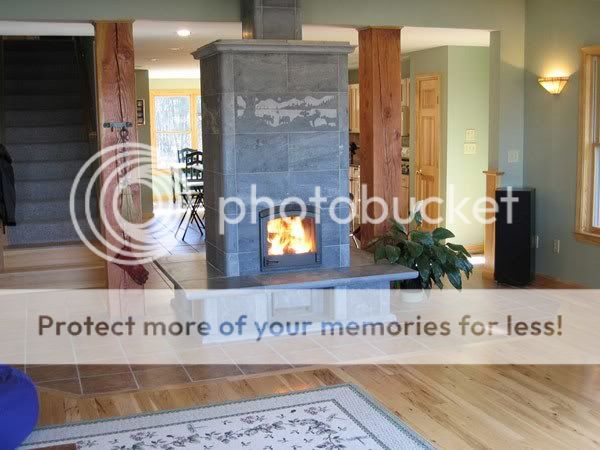
The Finns did a great deal of research at their Technical Institute and learned that the hottest wood fire is gained from a high firebox, I don't recall the exact specs but the firebox in the Finnish Fireplace is about 4 feet high. A firebox this high generates the hottest heat.
With a 5 to 7 ton fireplace, set entirely within the house, like a cast iron wood stove would be, the massive amount of masonry absorbs the heat of the fire, and then radiates out the heat all day.
Even on a cold day, say a low of about 10 degrees, the Finnish Fireplace is burned only for about a half an hour in the morning, and then again for a half hour at night.
On a really cold night in Finland, the Finnish Fireplace is burned 3 times a day. The 1700 degree fire turns an armload of firewood into a small amount of ash.
I am in the North Carolina Mountains and I wanted to install a Tulikivi Finnish Fireplace in my log cabin. Alas, I learned that it is not cold enough here to efficiently use a Finnish Fireplace.
Here is a pic of a Tulikivi Finnish Fireplace:

Last edited:




